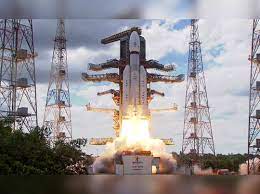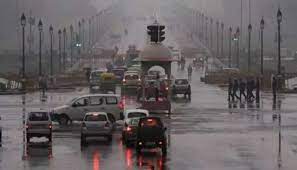Chandrayaan-3 spacecraft will reach Moon’s orbit about a month after launch

India on Friday successfully launched its third lunar mission – ‘Chandrayaan-3’ through LVM3-M4 rocket. Under this campaign, once again ‘soft landing’ will be attempted on the lunar surface. Once successful in this, India will join the club of countries like America, former Soviet Union and China who have achieved such a feat and it will become the fourth country in the world to set such a record. Chandrayaan-3 spacecraft will reach the Moon’s orbit about a month after launch. Lander Vikram and Rover Pragyan are expected to land on the Moon on 23 August.
What are the main objectives of Chandrayaan-3?
Chandrayaan-3 was launched into space by LVM3 rocket from Satish Dhawan Space Center in Sriharikota. Once in orbit, the module will take the lander and rover configuration into a 100 km lunar orbit. After this, the lander will separate from the propulsion module and attempt a soft landing on the lunar surface.
Chandrayaan-3, a follow-up mission to Chandrayaan-2, will attempt to land a spacecraft on the Moon and deploy a rover to explore the lunar surface. The rover will collect data on the composition and geology of the Moon. In an interview with NDTV, ISRO Chairman S Somnath discussed how the space agency has learned from its past failures and implemented changes to improve the chances of success of the Chandrayaan-3 mission.
He said, “The main shortcoming in the previous Chandrayaan-2 mission was that off-nominal conditions were introduced into the system. Everything was not nominal and the vehicle was not able to handle off-nominal conditions for a safe landing.” In addition to its primary goal of landing a spacecraft on the Moon, Chandrayaan-3 will also carry scientific experiments to study the Moon’s environment, including its history, geology and resource potential.
Chandrayaan-3 is carrying six payloads to study the lunar soil and photograph the Earth from the Moon’s orbit. During its 14-day mission (one lunar day) after landing, Chandrayaan-3 will conduct a series of unprecedented experiments using its payloads Rambha and ILSA. These experiments will study the Moon’s atmosphere and dig into the surface to better understand its mineralogical composition.
Lander Vikram will take pictures of rover Pragyan which will deploy its instruments to study seismic activity on the Moon. Pragyan will use its laser beam to melt a piece of the Moon’s surface, called regolith, and analyze the gases emitted in the process.
Through this mission, India will not only gain a wealth of knowledge about the lunar surface, but also its potential for future human habitation. ISRO chief S Somnath said that the place near the equator is more likely to be suitable for human habitation. He said, “I don’t know that aspect very well – what’s the best place for humans to go. You’re talking from a water availability perspective and that’s probably one aspect. Today, one of the critical requirements One is temperature variations as well as the availability of solar energy for electricity generation. From that point, an equatorial location may be more ideal for humans to settle, if at all to build human habitats.”
Another payload, the Radio Anatomy of Moon Bound Hypersensitive Ionosphere and Atmosphere (RABHA), will measure the density of charged particles near the lunar surface and how it changes over time. Additionally, the Alpha Particle X-ray Spectrometer (APXS) will measure the chemical composition and estimate the mineralogical composition of the lunar surface, while the Laser-Induced Breakdown Spectroscope (LIBS) will determine the elemental composition of the lunar soil.
To survive the moon’s cold night temperature of -232°C, Chandrayaan-3 will send its lunar lander to the Moon’s south pole at 70° latitude before nightfall. The spacecraft will land on the lunar surface on August 23 at 5:47 pm.
















